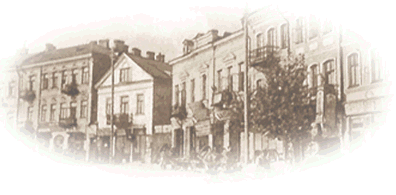

Updating the Jewish Image of Poles
By RICHARD BERNSTEIN
It is the "life" in her subtitle as much as the "death" that interests Eva Hoffman in "Shtetl", her history of Poles and Jews in Poland as seen through the history of a small town near the border with the former Soviet Union. Ms. Hoffman, an American writer who was born in Poland, wants, as she puts it, "not only to remember but to remember strenuously". In so doing, she aims to rescue the complicated relations between them from the aggrieved cliches that tend to dominate contemporary images. Especially since the Holocaust, Jews have, Ms. Hoffman says, seen Poland as "the very heart of darkness, the central symbol of the inferno." But this way of looking at things is simply not true, she argues, presenting her book as a kind of inverse of what may be the most heatedly debated book of the last couple of years, Daniel Jonah Goldhagen's "Hitler's Willing Executioners" Mr. Goldhagen's thesis is that the Holocaust was the logical result of German culture itself, which took Jew hating as a central principle. Ms. Hoffman's main point is, by contrast, to demonstrate the falseness of a related notion: '"That ordinary Poles were naturally inclined, by virtue of their congenital anti-Semitism, to participate in the genocide, and that Poles even today must be viewed with extreme suspicion or condemned as guilty for the fate of the Jews in their country."
To accomplish her purpose, Ms. Hoffman, a former editor at The New York Times Book Review, visited Bransk, a town on the Nurzec River in eastern Poland that was the subject of a documentary film, also called "Shtetl", produced and directed by Marian Marzynski and shown on "Frontline" on the Public Broadcasting System last year. Ms. Hoffman speaks to people in Bransk. She reads its Yizkor book, a Jewish Book of Memory, written two years after World War II. She spends time with one Zbigniew Romaniuk, a remarkable young resident of the town who took it on himself to research its Jewish history. He and some other young men, none of them Jews, even created a memorial Jewish cemetery made out of gravestones that they unearthed and restored. Ms. Hoffman, who is Jewish, also interviews the few Jews who survived in a town that once had about 4,000 of them, more than half the total population. And she examines the scattered documents that are available to complete a history of Jewish life in Bransk that goes back to the 18th century.
Ms. Hoffman's project is certainly worthy, and the book she has produced amply proves her point, that the history of the Poles and the Jews is morally complicated. The solidity of the argument does not rescue "Shtetl" (the word means small town in Yiddish) from dryness and abstraction. It is not an easy task to put flesh and blood into the history of a small, obscure place that produced no famous people or notable local chroniclers, and Ms. Hoffman, while dutifully recording what information she obtains does not manage to surmount the limitations she faced. One feels at the end that Ms. Hoffman's historical lesson has been achieved, but for the feel of the shtetl, a sense of its richness and poverty, its eccentric threadbare piety, its truculence and struggle, Ms. Hoffman does not add a great deal to our knowledge. The Jewish history of Bransk probably goes back to early medieval times, but Jewish written history dates only to the mid-16th century, when 17 flour mills are recorded as belonging to Jews. Ms. Hoffman recounts the stages of the Jewish presence in Poland, from the periods of welcome, especially by Poland's landed aristocracy who needed the Jews' skills in trade and accounting, to those of hostility. As in much of the long history of anti-Semitism, Poland's version grew stronger when the country was under attack from outsiders and the Jews were suspected of disloyalty.
Still, for centuries, as Ms. Hoffman shows, the Polish attitude toward the Jews was complicated, with the supposed magical and esoteric wisdom of the Jews provoking both fear and respect. "Jews played an inordinately important role in the peasants' mythological universe, as is testified by countless Polish proverbs, verses, legends and folk tales", Ms. Hoffman reports. But even between the great 20th century wars, when nationalism was growing in Poland and anti-Semitism became more virulent than ever before, Jews were never "driven to camouflage or silence".
Indeed, Ms. Hoffman shows, in chapters that become richer as they approach our own times, just how full Jewish life was. Bransk had 15 political groups, several of them Zionist. Throughout Poland, despite quotas in higher education, more than half the doctors in private practice and a third of the lawyers were Jews. There were literally hundreds of Yiddish-language newspapers. Ms. Hoffman certainly describes Polish hatred of Jews, which played a grim role after the Nazi occupation in 1939. But along with acts of hatred and betrayal were many acts of courage, sometimes encouraged by local Catholic priests who told their parishioners of their duty to help those in need, meaning the Jews.
The most gripping story in Ms. Hoffman's book is that of a native of Bransk named Jack Rubin who survived the war largely because he was hidden by a Polish farmer named Kozlowski, who risked his life and that of his family to save him. In the end, only 76 Jews of Bransk survived the war; the rest were shipped by train to Treblinka, where they perished in the gas chamber on Nov. 10, 1.942. But Ms. Hoffman is surely correct to remind us that neither Poland nor the Poles can be held responsible for their deaths.
SHTETL, The Life and Death
of a Small Town and the World of Polish Jews
By Eva Hoffman
(New York Times, October 15, 1997)
| English | ||